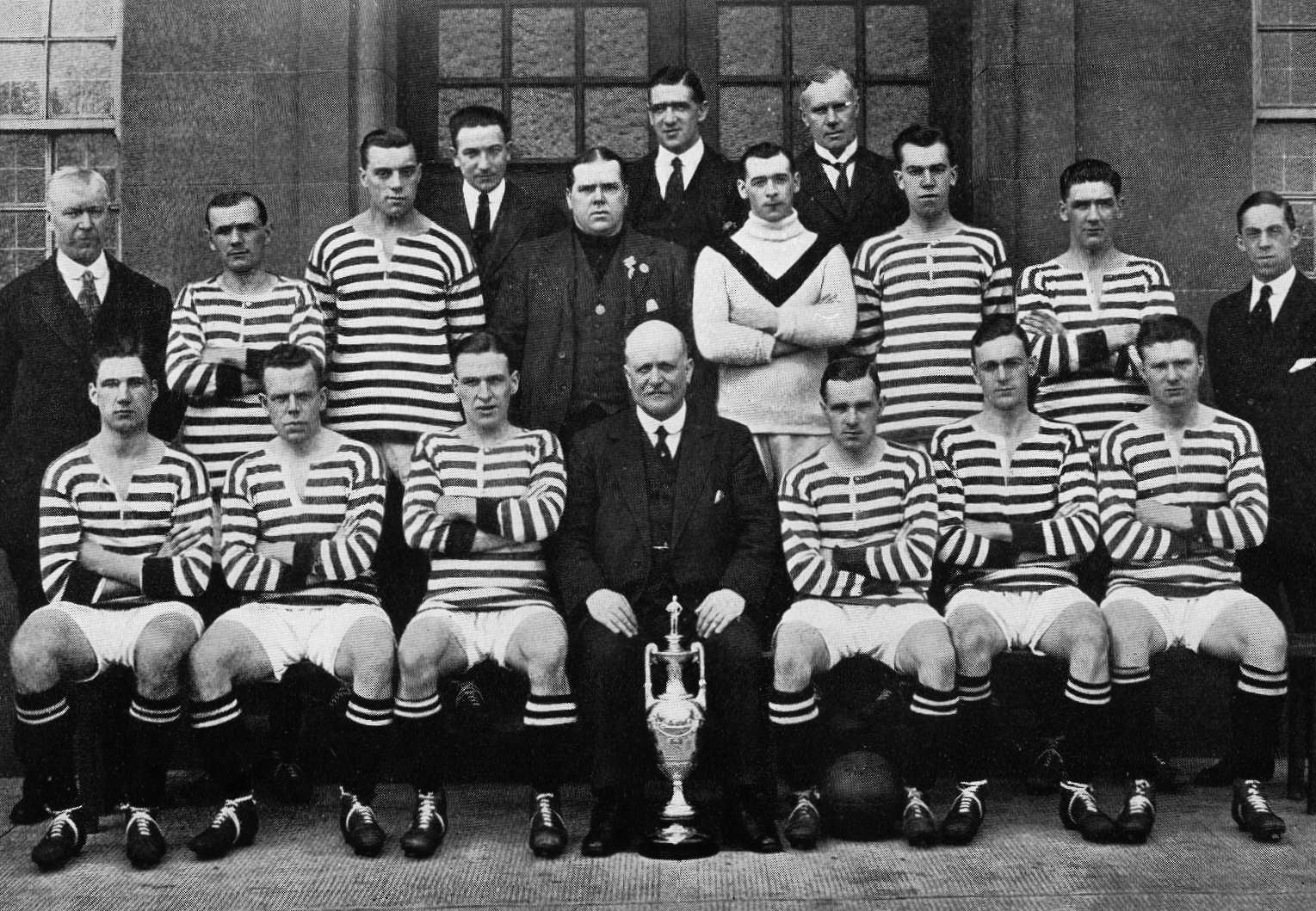The Queen's Park Story: From Early Innovators to Last Enthusiasts
The year is 1872. Ulysses S. Grant is elected President of the United States, Yellowstone becomes the world's first national park, and the first case of equine influenza is reported in Toronto, Canada, this which will significantly disrupt life in North America in mid-December.
Meanwhile, on 30 November, the first international football match to be retrospectively recognized by FIFA as 'official' took place at Hamilton Crescent, Glasgow, between Scotland and England. And remarkably, the entire Scottish squad is made up of players from just one club.
If someone says the word Glasgow to you, what images does that conjure up as a football fan? I guess the Old Firm - Celtic vs Rangers, Green vs Blue, Catholic vs Protestant - Scotland's two historically strongest teams involved in one of the most heated derbies in the world. Two teams who, despite being sworn enemies, need each other for nourishment, as seen in recent years when the absence of the elite Rangers resulted in the loss of this great game .
What you might not know, however, is that halfway between the famous theaters of Ibrox and Celtic Park to the south is the 52,000 capacity Hampden Park seats, home of the national team, which was built in 1903 and was the largest stadium in the world at the time.
Hampden Park was actually the third stadium built in the area under this name. The very first was initially used in October 1873 by Scotland's oldest football club. That club wasn't Celtic or Rangers, but a team nicknamed The Spiders, which was formed in 1867, making them the oldest club in the world outside of England and Wales. This club is Queen's Park.
Queen's Park has an important role to play in the history and development of the modern game we know and love. At that time, they dominated Scottish football. Indeed, the first rules of the game in Scotland were developed at Queen's Park. They were also the instigators of the Scottish Football Association and the first winners of the Scottish Cup in 1874.
As mentioned, 1872 saw the first match between Scotland and England, the former fielding 11 players all from the same team: you guessed it, Queen's Park. The match ended 0-0 and had the big claim that both teams used the following formations: Scotland went 2-2-6 while England fielded a more attacking 1-1-8. No one knows how the match ended 0-0 with these formations.
Highlighted by such formations, early football tactics were quite rudimentary. This often consisted of giving the ball to a player, who would then race uphill surrounded by teammates in a ram formation more akin to what we now call rugby. But again, Queen's Park pushed the game forward. This is where a revolutionary new tactic was invented. What if, instead of just charging with the ball until it was tackled, we passed the ball to a colleague when challenged?
This idea of coming together as a team, which gave rise to the term 'combined football', helped Scottish football lead the way. Queen's Park was the Barcelona of the 1870s, with that lively, alien ball movement. In March 1872, the Spiders were drawn to face the Wanderers in the FA Cup – Scottish teams participated in this famous competition until 1887 – and crushed them 5-0. A description of the game in the press included the following: "The game was now in the center, the men of Queen's Park dribbling and passing, while their opponents mainly indulged in heavy kicks."
One can only imagine the stunned Englishmen watching, monocles dropping in shock as their faces flush under their handlebar mustaches. The gall of these bounders! Teamwork: what an outrageous proposition.
And so, from 1874 to 1893, Queen's Park won ten Scottish Cups - still the third highest...


The year is 1872. Ulysses S. Grant is elected President of the United States, Yellowstone becomes the world's first national park, and the first case of equine influenza is reported in Toronto, Canada, this which will significantly disrupt life in North America in mid-December.
Meanwhile, on 30 November, the first international football match to be retrospectively recognized by FIFA as 'official' took place at Hamilton Crescent, Glasgow, between Scotland and England. And remarkably, the entire Scottish squad is made up of players from just one club.
If someone says the word Glasgow to you, what images does that conjure up as a football fan? I guess the Old Firm - Celtic vs Rangers, Green vs Blue, Catholic vs Protestant - Scotland's two historically strongest teams involved in one of the most heated derbies in the world. Two teams who, despite being sworn enemies, need each other for nourishment, as seen in recent years when the absence of the elite Rangers resulted in the loss of this great game .
What you might not know, however, is that halfway between the famous theaters of Ibrox and Celtic Park to the south is the 52,000 capacity Hampden Park seats, home of the national team, which was built in 1903 and was the largest stadium in the world at the time.
Hampden Park was actually the third stadium built in the area under this name. The very first was initially used in October 1873 by Scotland's oldest football club. That club wasn't Celtic or Rangers, but a team nicknamed The Spiders, which was formed in 1867, making them the oldest club in the world outside of England and Wales. This club is Queen's Park.
Queen's Park has an important role to play in the history and development of the modern game we know and love. At that time, they dominated Scottish football. Indeed, the first rules of the game in Scotland were developed at Queen's Park. They were also the instigators of the Scottish Football Association and the first winners of the Scottish Cup in 1874.
As mentioned, 1872 saw the first match between Scotland and England, the former fielding 11 players all from the same team: you guessed it, Queen's Park. The match ended 0-0 and had the big claim that both teams used the following formations: Scotland went 2-2-6 while England fielded a more attacking 1-1-8. No one knows how the match ended 0-0 with these formations.
Highlighted by such formations, early football tactics were quite rudimentary. This often consisted of giving the ball to a player, who would then race uphill surrounded by teammates in a ram formation more akin to what we now call rugby. But again, Queen's Park pushed the game forward. This is where a revolutionary new tactic was invented. What if, instead of just charging with the ball until it was tackled, we passed the ball to a colleague when challenged?
This idea of coming together as a team, which gave rise to the term 'combined football', helped Scottish football lead the way. Queen's Park was the Barcelona of the 1870s, with that lively, alien ball movement. In March 1872, the Spiders were drawn to face the Wanderers in the FA Cup – Scottish teams participated in this famous competition until 1887 – and crushed them 5-0. A description of the game in the press included the following: "The game was now in the center, the men of Queen's Park dribbling and passing, while their opponents mainly indulged in heavy kicks."
One can only imagine the stunned Englishmen watching, monocles dropping in shock as their faces flush under their handlebar mustaches. The gall of these bounders! Teamwork: what an outrageous proposition.
And so, from 1874 to 1893, Queen's Park won ten Scottish Cups - still the third highest...
What's Your Reaction?






















